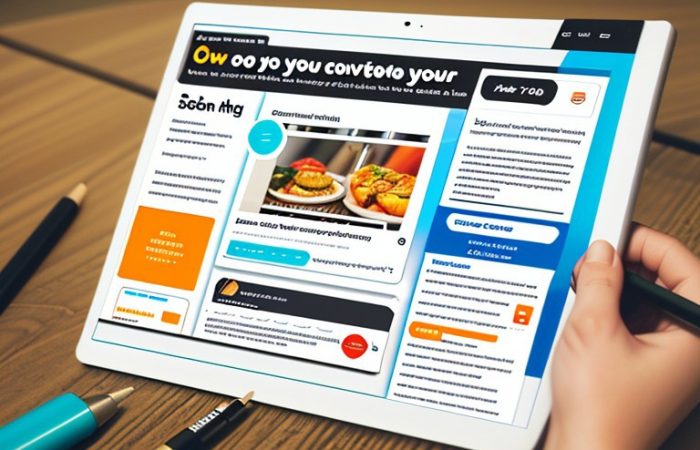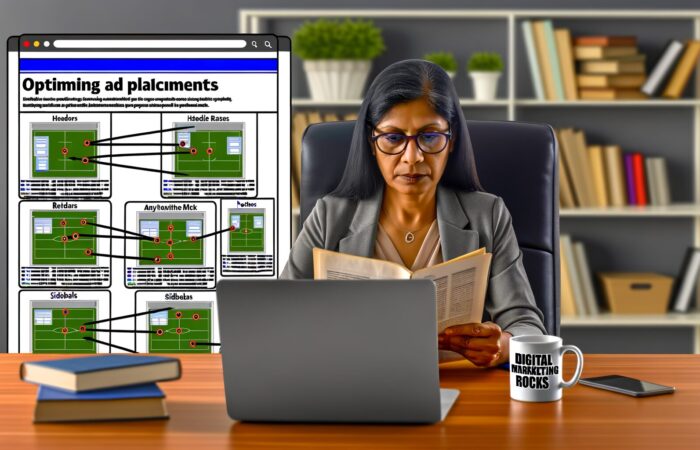Understanding Affiliate Marketing: The Basics
So, you’ve heard about affiliate marketing, and you’re curious to understand what it’s all about, right? No worries, you’re in the right place. Let’s unravel the basics of affiliate marketing, and trust me, it’s not as complicated as it may sound.
What is Affiliate Marketing?
In the simplest terms, affiliate marketing is a type of performance-based marketing where businesses reward affiliates (that’s you) for driving traffic to their products or services. Think of it as a reward system; you promote a product, and when someone buys it through your recommendation, you earn a commission. Pretty cool, huh?
How Does It Work?
Let’s break it down step-by-step:
- Join an Affiliate Program: First things first, you need to join an affiliate program. This can be directly through a company or via affiliate networks like Amazon Associates, ShareASale, or CJ Affiliate.
- Get Your Unique ID: Upon joining, you’ll receive a unique affiliate ID, which will be embedded in all the links you share.
- Share and Promote: Your job is to share and promote these links on your website, blog, social media, or any other platform.
- Earn Commission: When someone clicks on your link and makes a purchase, you earn a commission. It’s like being a virtual salesperson without having to handle any products or deal with customer service!
Key Players in Affiliate Marketing
Understanding the roles within affiliate marketing is crucial. Here are the key players:
- Merchant/Advertiser: This is the business or brand that sells the product or service. They create the affiliate program and offer commissions to promote their offerings.
- Affiliate/Publisher: Affiliates are the individuals or businesses that promote the merchant’s products. Yes, that’s you! You earn a commission for every successful sale or desired action completed.
- Customer: The folks who click on your affiliate links and engage with the merchant’s product. Ideally, they make a purchase, allowing you to earn that coveted commission.
- Affiliate Network: A middleman that connects affiliates and merchants. While not strictly necessary, affiliate networks can provide structure, streamline payments, and improve vendor relations.
Why Choose Affiliate Marketing?
Lots of people get into affiliate marketing for fantastic reasons. Maybe any of these will resonate with you too:
- Low Barrier to Entry: You don’t need a ton of money to start. A good website and the willingness to learn can take you pretty far.
- Flexibility: You set your own schedule. You can do it as a side hustle or turn it into your main gig.
- Passive Income: Once you set up your affiliate links and drive traffic to them, you can generate income even while you sleep!
Choosing Your Niche: How to Stand Out
So, you’re diving into affiliate marketing and wondering, “How can I find my place in this sprawling online world?” You’re not alone. Choosing a niche can feel a bit like picking a needle out of a haystack. But don’t worry, it’s simpler than you think, and I’m here to guide you through it!
What is a Niche?
First things first, let’s clarify what exactly a niche is. A niche is a specific segment of the market that piques your interest and has a potential customer base. Think of it as a smaller, focused subset of a broader category. Whether it’s eco-friendly pet products or luxury travel guides, your niche should be something you’re passionate about.
Why is Choosing the Right Niche Crucial?
Choosing the right niche is like setting a firm foundation for a building. The more solid it is, the better your affiliate marketing efforts will perform. Here’s why a good niche is vital:
- Targeted Audience: Having a clear niche means you can focus your marketing efforts on a specific group. You’re not trying to please everyone and end up pleasing no one; instead, you’re resonating deeply with a select audience.
- Authority: When you pick a niche and stick to it, you can become an expert in that area. Your voice will carry weight, and people will trust your recommendations.
- Lower Competition: Rather than competing in saturated markets, a well-chosen niche allows you to stand out, creating space for yourself where competition might be lower.
Steps to Choosing Your Perfect Niche
Finding your niche isn’t just wishful thinking; it requires a blend of introspection and research. Here’s a step-by-step guide to get you there:
- Follow Your Passion: Think about your hobbies, interests, and areas where you have expertise. If you’re passionate about something, creating content on it will be enjoyable rather than a chore.
- Research Market Demand: Passion alone isn’t enough. Use tools like Google Trends or Ubersuggest to see if there’s an existing demand for your interests. Look for keywords related to your potential niche to see how popular they are.
- Analyze the Competition: Check out other affiliate blogs, websites, and influencers in your potential niche. This isn’t to scare you off, but to figure out what you can do differently. What unique angle can you offer?
- Identify Your Audience’s Pain Points: Figure out the common issues faced by your target audience, and think about how you can help solve them through unique content or products.
Validating Your Niche
Once you’ve zeroed in on a potential niche, it’s time to validate your choice. Here’s how:
- Survey Your Audience: If you already have a small following, ask them about their interests and needs to see if they align with your chosen niche.
- Create Trial Content: Publish a few posts or videos based on your niche and measure audience engagement. A spike in interest can signal you’ve hit the jackpot.
- Join Forums and Groups: Participate in niche-related online communities like Reddit or Facebook groups to gauge interest levels and connect with potential customers.
Choosing a niche is like finding your true north in the vast sea of online marketing. Be intentional with your choice, combining your passion with market demand and an understanding of your audience’s needs. With the right niche, you’ll find that everything—from content creation to promotion—just falls into place. Happy niching!
Setting Up Your Website: Tools and Tips
Alright, you’ve chosen a niche that’s close to your heart, and now it’s time to build your online hub. Here’s where your affiliate marketing empire really starts taking shape. But don’t worry if you’re not a tech whiz – setting up a website doesn’t have to be rocket science.
Choosing The Right Platform
First things first, you’ll need a content management system (CMS). WordPress is a crowd favorite for good reason – it’s user-friendly, super customizable, and has tons of plugins to add extra functionality. With WordPress, you get the perfect blend of simplicity and power, ideal for any beginner or seasoned pro.
Investing in Good Hosting
Never skimp on your web hosting service. This is what keeps your website up and running smoothly around the clock. Reputable hosting providers like Bluehost, SiteGround, or WP Engine offer reliable service, impressive uptime, and great customer support – all vital when you’re just starting out.
Picking a Memorable Domain Name
Your domain name should reflect your niche and be easy to remember. It’s like your online address. When brainstorming names, go for something brand-related but catchy. Sometimes, it pays to invest in a premium domain – it’s a small price for a massive credibility boost. Use a tool like Namecheap or GoDaddy to find and register your domain.
Using Essential Plugins
Plugins are your website’s best friends – they can add a myriad of functionalities without you having to write a single line of code. Here are a few must-haves:
- Yoast SEO: This gem will guide you in optimizing your posts for search engines.
- Google Analytics: Keep tabs on your visitors and see what’s working (and what’s not).
- WP Super Cache: Speed up your site, because nobody likes a sluggish website.
- ThirstyAffiliates: Easily manage and cloak your affiliate links for a cleaner look.
Designing Your Website
Now let’s talk aesthetics. A user-friendly and visually appealing design can keep your visitors engaged. Opt for a clean, responsive theme that looks good both on desktops and mobile devices. Astra, GeneratePress, and OceanWP are great options that give you flexibility and professional polish. Remember, consistency is key – ensure your fonts, colors, and images align with your brand.
Content Technology
Your content needs the support of good tech to shine. Using drag-and-drop page builders like Elementor or Beaver Builder can simplify the process of creating stunning pages without any coding headaches. You’ll be amazed at what you can do with just a few clicks.
User Experience (UX)
Imagine landing on a cluttered webpage. Terrible, right? Consistently good UX encourages visitors to stay longer and explore more. Ensure your site is easy to navigate with intuitive menus, clear calls-to-action, and a smooth checkout process if you’re selling something. Small touches, like fast loading speeds and minimal pop-ups, can make a big difference in retaining user interest.
Connecting to Social Media
Your website should feel connected to the broader web, especially your social media channels. Make it easy for users to share your content by adding social share buttons. Tools like Social Warfare or ShareThis can integrate seamlessly into your site, helping boost your reach organically.
Setting up your affiliate marketing website is like creating a comfy, inviting digital home where your audience will want to stick around. Think of it as an exciting blank canvas ready for your creative touch. With the right tools and tips in your arsenal, you’ll be more than ready to launch and thrive.
Content Creation: Crafting Compelling and Relevant Posts
So, you’ve set up your website and you’re clear on your niche. Now comes arguably the most exciting part of affiliate marketing—content creation! Let’s talk about some of the coolest ways to craft compelling, relevant posts that not only hook your audience but also convert them into dedicated followers and, eventually, buyers.
Create Value-Driven Content
Your primary goal should be to deliver value. This is the golden rule of content creation. Genuine, helpful, and high-quality content will set you apart in an increasingly crowded digital space. Here’s how:
- Understand Your Audience: Dive deep into research to know who your audience is, their pain points, their needs, and their desires. Tailor your content to address these specific areas.
- Answer Questions: Think about what questions people in your niche might be asking and provide detailed answers. Articles like “How-To” guides, tutorials, and FAQs are always a hit.
The Power of Storytelling
People have an insatiable appetite for stories—they’re engaging, relate to experiences, and often, they inspire action. Why not weave storytelling into your posts?
- Relatability: Share personal anecdotes or user testimonials to create an instant connection with your audience.
- Transparency: Discuss your experiences, including the challenges and successes you’ve encountered. Readers tend to trust you more when they see you’re genuinely invested.
Quality Over Quantity
It’s tempting to churn out content rapidly, but remember, quality trumps quantity every single time. High-quality, deep-dive posts are likely to yield better long-term results than a plethora of skimpy ones.
- Research Extensively: Ensure that your content is well-researched and backed by credible sources. Nothing’s worse than misleading information!
- Visual Appeal: Infographics, images, and other visual aids can make your post more engaging and easier to digest.
Consistency is Key
Rather than posting sporadically, establish a consistent schedule. Whether it’s once a week or bi-weekly, consistency builds trust and expectation with your audience.
- Editorial Calendar: Draft an editorial calendar to plan and pace your content. This way, you’ll always have fresh content in the pipeline.
Optimize for SEO
Search engine optimization (SEO) can be a game-changer in driving organic traffic to your site. Make your content SEO-friendly with:
- Keywords: Identify relevant keywords and naturally integrate them into your content to help it rank higher in search results.
- Meta Descriptions: Write compelling meta descriptions to increase click-through rates.
- Internal Linking: Link to other relevant posts on your website to improve site structure and SEO.
Engage With Your Audience
Your relationship with your audience shouldn’t be one-sided. Encourage reader engagement through:
- Call-to-Actions: Prompt readers to comment, share, and interact with your posts.
- Respond to Comments: Take time to respond to comments and nurture those digital relationships.
When creating content, always aim to stay authentic and let your unique voice shine through. This sincerity and dedication can transform readers into loyal supporters who trust your recommendations.
Your content is the bridge that connects you to your audience. The more effort you put into crafting exceptional posts, the stronger and more reliable this bridge will be.
Driving Traffic: Strategies for Effective Promotion
So, now that your content is on point, it’s time to get eyes on your site. What good is top-notch content without an audience, right? Let’s dive into some specific, actionable ways to drive traffic to your affiliate site.
Leverage Social Media
Social media should be your best friend when it comes to driving traffic. Platforms like Facebook, Instagram, and Twitter are not just for sharing cat memes (though we all love those).
- Facebook Groups: Join niche-relevant groups and become an active participant. You can share your content when appropriate or even create your own group.
- Instagram: Use Stories and posts with engaging visuals and compelling hashtags. Tag influencers and utilize Instagram’s shopping features if relevant.
- Twitter: Tweet regularly about trending topics in your niche and use relevant hashtags. Engage with influencers and join relevant conversations.
SEO: Long-Term Traffic Goldmine
Search Engine Optimization (SEO) might sound like a riddle, but it’s essential for attracting organic traffic. Here’s how to make it work for you:
- Relevant Keywords: Identify and use keywords that your target audience is likely to use. Tools like Google Keyword Planner can help.
- Quality Content: Search engines love comprehensive, well-written articles. Aim to create content that answers common questions in your niche.
- On-Page SEO: Don’t forget meta descriptions, header tags, alt text for images, and internal linking. It can all make a huge difference.
Email Marketing
An often overlooked but highly effective way to bring visitors back to your site is through a well-crafted email marketing campaign.
- Build a Subscriber List: Offer something valuable, like a free ebook or exclusive tips, to entice visitors to subscribe to your newsletter.
- Consistent Engagement: Send regular updates with your latest blog posts, promotions, and useful tips. Just don’t flood their inbox, or they might be quick to unsubscribe.
Collaborate with Influencers and Bloggers
Connecting with influencers and other bloggers in your niche can dramatically widen your reach.
- Guest Posting: Write guest posts for popular blogs in your niche. This not only builds backlinks but also positions you as an authority.
- Influencers: Collaborate with social media influencers for shout-outs, reviews, or partnerships. Their followers are potential visitors for your site.
Paid Advertising
Sometimes, giving your traffic a quick boost requires reaching into the wallet.
- Google Ads: Target keywords with PPC campaigns to appear on search results immediately.
- Social Media Ads: Platforms like Facebook and Instagram offer advanced targeting features to reach your ideal audience.
Analyzing Your Traffic
Finally, keep an eye on how your strategies are performing. Tools like Google Analytics reveal what’s working and what needs tweaking. Don’t be afraid to experiment but always base iterations on data.
So there we have it! With these strategies, you’ll be well on your way to becoming a traffic-driving master. Remember, every bit of traffic brings you one step closer to achieving your affiliate marketing dreams. Ready to get started?











No Comment! Be the first one.